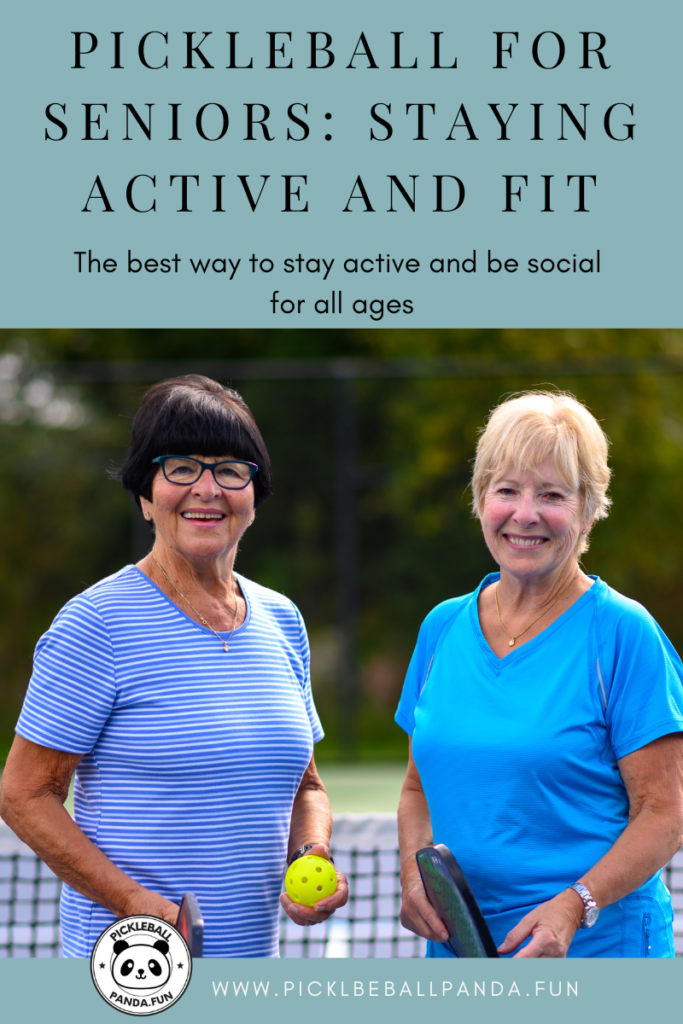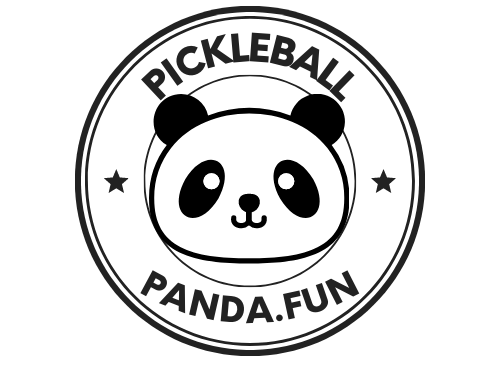
The best way to stay active and social for all ages
Introduction
As we age, staying active and maintaining physical fitness becomes increasingly important. Regular exercise not only keeps our bodies strong and healthy but also contributes to overall well-being. One activity that has gained popularity among seniors for its numerous health benefits is pickleball. In this article, we will explore the world of pickleball, its benefits for seniors, and how it can help them stay active and fit.
Table of Contents
- What is Pickleball?
- Why Pickleball is Ideal for Seniors
- Physical Benefits of Pickleball for Seniors
- Increased Cardiovascular Health
- Improved Muscular Strength
- Enhanced Flexibility and Balance
- Mental and Emotional Benefits of Pickleball for Seniors
- Stress Reduction
- Cognitive Stimulation
- Social Interaction and Connection
- Tips for Seniors Getting Started with Pickleball
- Equipment and Court Requirements
- Warm-up and Safety Considerations
- Basic Pickleball Techniques for Seniors
- Grip and Stance
- Serve and Return
- Dinks and Volleys
- Pickleball Strategies for Seniors
- Playing Smart and Efficiently
- Positioning on the Court
- Communication and Teamwork
- Joining Pickleball Communities and Leagues
- Frequently Asked Questions (FAQs)
- What is the origin of pickleball?
- Can pickleball be played indoors?
- Is pickleball a low-impact sport?
- How can pickleball benefit seniors with joint problems?
- Are there any age restrictions for playing pickleball?
What is Pickleball?
Pickleball is a paddle sport that combines elements of tennis, badminton, and table tennis. It is played on a smaller court with a modified tennis net, using solid paddles and a plastic ball with holes. The rules are simple, making it easy for beginners to learn and enjoy the game. Pickleball can be played in singles or doubles format, providing flexibility for players of all skill levels.
Why Pickleball is Ideal for Seniors
Pickleball has gained significant popularity among seniors for several reasons. Firstly, it offers a low-impact form of exercise, reducing the risk of injuries compared to high-impact sports. The smaller court size and slower-paced gameplay make it easier on the joints, making it suitable for seniors with joint problems or arthritis. Additionally, pickleball provides a social environment that encourages interaction and connection, which is beneficial for mental well-being.
Physical Benefits of Pickleball for Seniors
Increased Cardiovascular Health
Engaging in regular physical activity like pickleball can significantly improve cardiovascular health in seniors. The combination of aerobic exercise and intermittent bursts of intensity during gameplay helps to increase heart rate, improve blood circulation, and strengthen the cardiovascular system. Playing pickleball regularly can reduce the risk of heart disease, stroke, and other cardiovascular conditions.
Improved Muscular Strength
Pickleball involves various movements that engage multiple muscle groups in the body. The repetitive motions of swinging the paddle, moving around the court, and executing shots help to strengthen the upper body, lower body, and core muscles. This improvement in muscular strength enhances overall stability, balance, and coordination, reducing the risk of falls and injuries.
Enhanced Flexibility and Balance
The nature of pickleball requires players to move quickly and change directions, which promotes flexibility and agility. The stretching and reaching involved in hitting shots also contribute to improved flexibility. Furthermore, the game’s emphasis on balance and coordination helps seniors maintain and enhance their stability, reducing the likelihood of falls and enhancing overall mobility.
Mental and Emotional Benefits of Pickleball for Seniors
Stress Reduction
Engaging in physical activity releases endorphins, which are natural mood boosters. Pickleball provides a fun and enjoyable way for seniors to relieve stress and improve their overall emotional well-being. The social aspect of the game, interacting with fellow players, can also contribute to reducing feelings of loneliness or isolation.
Cognitive Stimulation
Pickleball requires players to strategize, make quick decisions, and react to the ball’s movement. These mental challenges stimulate cognitive functions such as problem-solving, concentration, and hand-eye coordination. Regular play can help seniors maintain mental sharpness and potentially reduce the risk of cognitive decline.
Social Interaction and Connection
Loneliness and social isolation are common issues among seniors. Pickleball offers an opportunity for seniors to connect with others, form friendships, and build a sense of community. Playing doubles allows for teamwork and cooperation, fostering social interaction and a supportive environment.
Tips for Seniors Getting Started with Pickleball
- Consult with your healthcare provider before starting any new exercise program.
- Begin with a proper warm-up routine to prepare your body for physical activity.
- Start with beginner-friendly pickleball clinics or lessons to learn the rules and basic techniques.
- Invest in appropriate equipment, including a paddle that suits your grip and skill level.
- Find local pickleball communities or clubs where you can join and play with other enthusiasts.
- Focus on proper technique and gradually increase your intensity and playing time to avoid overexertion or injuries.
- Don’t be afraid to ask for guidance or tips from more experienced players.
Equipment and Court Requirements
To play pickleball, you will need the following equipment:
- Pickleball paddle
- Pickleball balls
- Comfortable athletic shoes
- Appropriate attire (breathable clothing, hat, sunglasses)
Pickleball can be played on various types of courts, including indoor and outdoor surfaces. The court dimensions are smaller than a tennis court, measuring 20 feet wide and 44 feet long for doubles play. However, for singles play, the court size is reduced to 20 feet wide and 22 feet long.
Warm-up and Safety Considerations
Before engaging in pickleball, it’s crucial to warm up your muscles to prevent injuries. A warm-up routine may include light jogging, stretching exercises, and shoulder rotations. Additionally, consider the following safety precautions:
- Stay hydrated by drinking water before, during, and after play.
- Use sunscreen to protect your skin from harmful UV rays when playing outdoors.
- Listen to your body and take breaks if you feel fatigued or experience any pain.
- Wear appropriate footwear to provide stability and reduce the risk of slips or falls.
Basic Pickleball Techniques for Seniors
Grip and Stance
Proper grip and stance are fundamental to performing well in pickleball. The most common grip is the Continental grip, which allows for versatility and control. Maintain a balanced stance with your feet shoulder-width apart, knees slightly bent, and weight distributed evenly.
Serve and Return
The serve is the starting shot in pickleball, and an effective serve sets the tone for the rally. Aim to serve deep and with enough height to clear the net. When returning serves, focus on positioning yourself correctly and hitting the ball back with control.
Dinks and Volleys
Dinks and volleys are short shots that require finesse and touch. Practice these shots to develop soft hands and control over the ball. A dink is a soft shot that just clears the net and lands close to the opponent’s side, while a volley is hitting the ball before it bounces. These shots are essential for maintaining control during rallies and putting pressure on your opponents.
Pickleball Strategies for Seniors
To excel in pickleball, seniors can utilize strategic approaches that optimize their gameplay. Here are some strategies to consider:
Playing Smart and Efficiently
- Focus on ball placement rather than power. Aim for areas where your opponents are not positioned well, forcing them into difficult shots.
- Use drop shots to catch your opponents off guard and make it challenging for them to reach the ball.
- Maintain consistency and minimize unforced errors by playing shots within your skill level.
- Observe your opponents’ weaknesses and adjust your game plan accordingly.
Positioning on the Court
- Stay near the kitchen (non-volley zone) to minimize the distance you need to cover. This position allows for quick reactions and effective net play.
- Be aware of your partner’s positioning during doubles play. Coordinate movements to cover more areas of the court and maintain court control.
Communication and Teamwork
- Communication is crucial in doubles play. Use verbal cues to indicate who will take specific shots or to alert your partner about opponent movements.
- Support your partner by covering their weaknesses and anticipating their shots.
- Encourage and motivate each other throughout the game, creating a positive and cohesive team dynamic.
Joining Pickleball Communities and Leagues
To fully embrace the pickleball experience, consider joining local pickleball communities or leagues. These organizations offer opportunities for regular play, social events, tournaments, and skill development. Engaging with like-minded individuals who share a passion for the sport can enhance your enjoyment and progression as a pickleball player.
Frequently Asked Questions (FAQs)
- What is the origin of pickleball?
- Pickleball was invented in 1965 on Bainbridge Island, Washington, by Joel Pritchard, Bill Bell, and Barney McCallum.
- Can pickleball be played indoors?
- Yes, pickleball can be played both indoors and outdoors. Indoor facilities provide a controlled environment for year-round play.
- Is pickleball a low-impact sport?
- Yes, pickleball is considered a low-impact sport due to its smaller court size and slower-paced gameplay, which puts less stress on joints compared to high-impact activities like running or tennis.
- How can pickleball benefit seniors with joint problems?
- Pickleball’s low-impact nature makes it an ideal sport for seniors with joint problems. The game promotes gentle movement, flexibility, and improved range of motion without excessive strain on joints.
- Are there any age restrictions for playing pickleball?
- There are no age restrictions for playing pickleball. The sport is inclusive and suitable for individuals of all ages and fitness levels.
Conclusion
Pickleball offers seniors a fun and engaging way to stay active, maintain physical fitness, and enjoy the social aspects of the game. With its numerous physical and mental benefits, including increased cardiovascular health, improved muscular strength, enhanced flexibility, reduced stress, and cognitive stimulation, pickleball proves to be an excellent choice for seniors looking to lead a healthy and active lifestyle. So grab a paddle, head to the court, and experience the joy and excitement of pickleball!
For more great tips on Pickleball go to www.PickleballPanda.Fun
